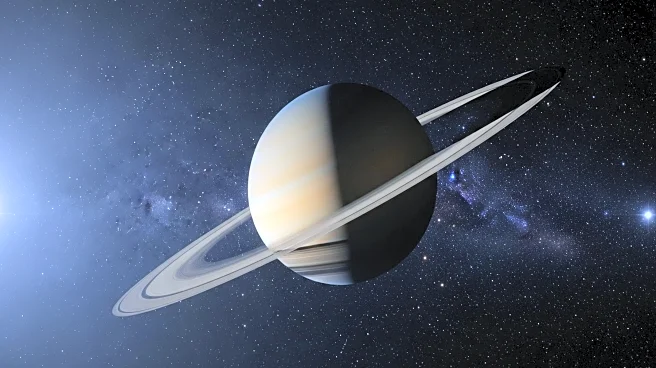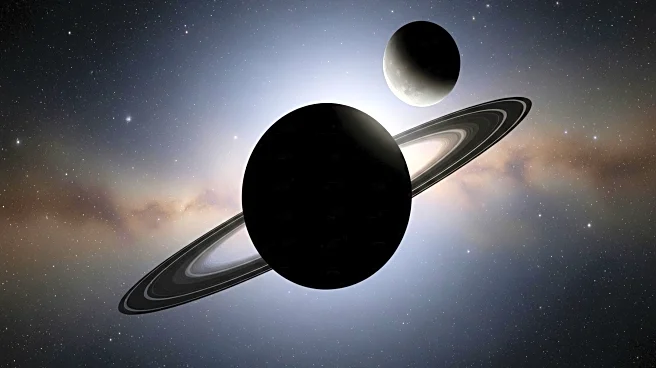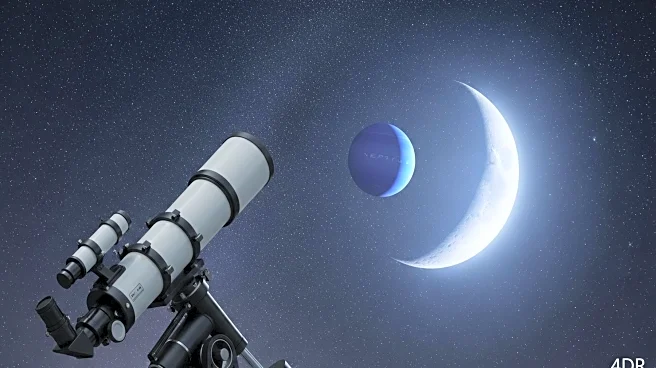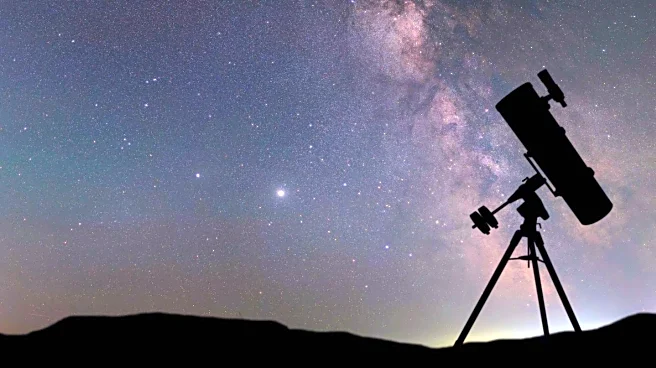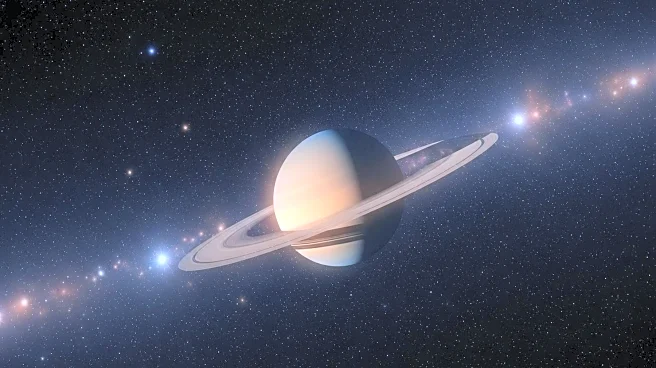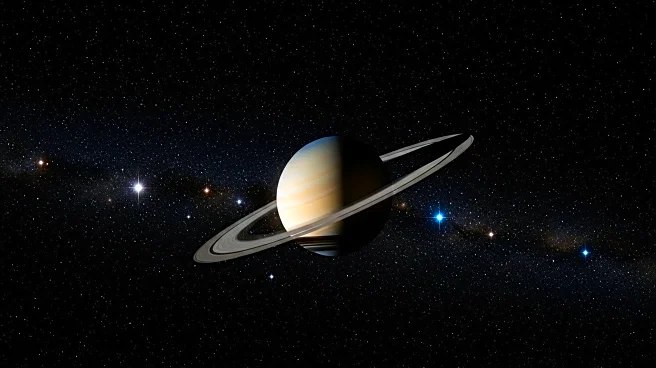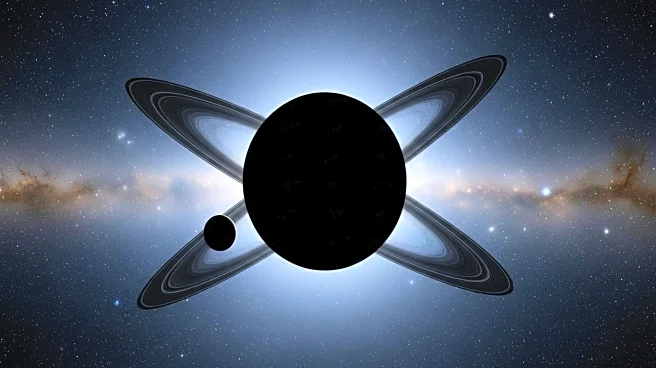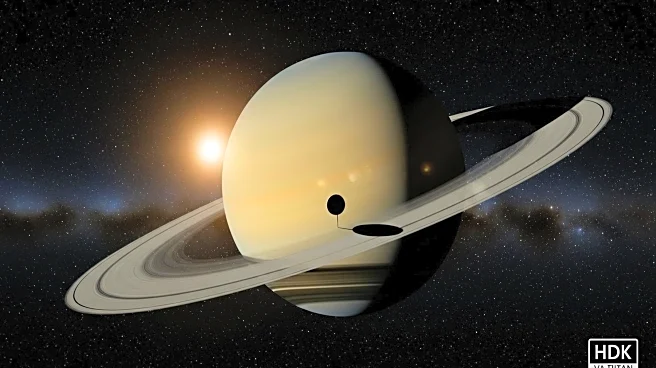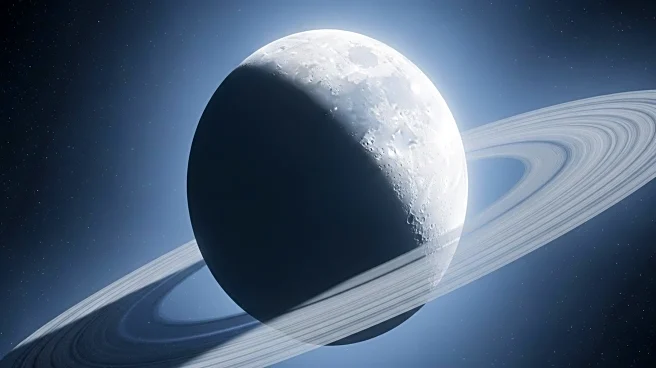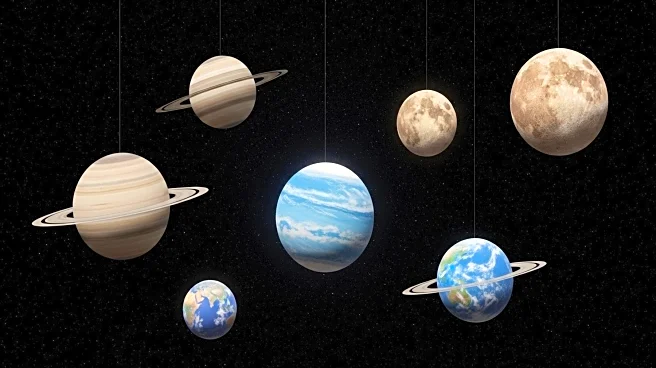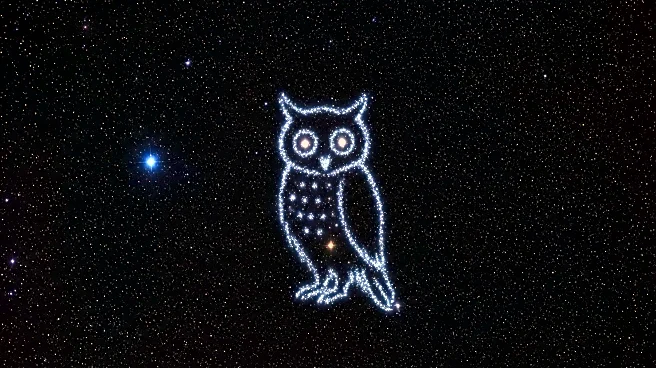What is the story about?
What's Happening?
Saturn is set to reach its annual opposition on September 21, aligning with Earth and the Sun in a straight trajectory. This celestial event will make Saturn appear brighter than at any other time of the year, as it is fully illuminated by sunlight. The planet will rise in the eastern sky around sunset and remain visible throughout the evening, with peak visibility occurring near midnight. The new moon phase will provide minimal interference, creating ideal conditions for viewing Saturn without the need for telescopic equipment. Despite its apparent proximity, Saturn will still be over 740 million miles away from Earth. For those with telescopes, Saturn's iconic rings and its largest moon, Titan, may be visible.
Why It's Important?
This event is significant for both amateur and professional astronomers, as it provides a rare opportunity to observe Saturn's features in detail. The visibility of Saturn's rings and its numerous moons can offer insights into the planet's composition and gravitational forces. Such celestial events also foster public interest in astronomy and science, encouraging educational activities and community stargazing events. The alignment of Saturn, Earth, and the Sun is a reminder of the dynamic nature of our solar system and the ongoing exploration of its mysteries.
What's Next?
Following its opposition, Saturn will remain visible for several weeks, although its brightness will gradually diminish as the Sun's interference increases. Other planets, such as Neptune and Uranus, will also reach opposition later this year, providing additional opportunities for astronomical observation. The continued study of Saturn and its moons may yield further discoveries about the planet's history and its role within the solar system.
AI Generated Content
Do you find this article useful?
